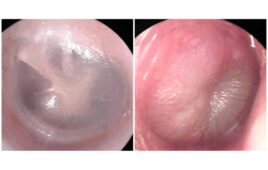The U.S. Food and Drug Administration (FDA) has granted commercial clearance for the Cerêve Sleep System, a prescription device that reduces latency to Stage 1 and Stage 2 sleep for people with insomnia.
With seven issued and nineteen pending patents, the system is comprised of a software-controlled bedside device that cools and pumps fluid to a forehead pad that is worn through the night. Clinical subjects found the device easy to use and to wear, and commented that it was a calming and comfortable experience, according to the company.
Some 55 million Americans meet the clinical definition of insomnia, experiencing not only problems getting to sleep but also serious impairment in their daytime activities. The cost of insomnia in the U.S. is over $100 billion annually, including poorer workplace performance, increased health care utilization, and increased accident risk.
To date, sleeping pills have been by far the most common medical treatment with nearly nine million adults having taken prescription sleeping pills in the last 30 days.Pills come with safety risks, in particular decreased mental alertness the morning after use, even if users feel fully awake. The medications can cause next-day impairment of driving and other activities that require full alertness, leading physicians and consumers alike to seek a drug-free alternative.

The Cerêve Sleep System is slated to launch during the second half of 2017.
“We are thrilled that the FDA has cleared the Cerêve Sleep System for treating people with insomnia,” Eric Nofzinger, M.D., a board-certified sleep physician and the company’s founder, saod in a statement. “This is the first and only insomnia device cleared to reduce sleep latency to Stage 1, the first stage of sleep, as well as Stage 2, a stage of sleep that typically represents over 50% of the sleep period. The Cerêve System offers a clinically-proven and safe alternative to pills, with the potential to help millions of Americans get to sleep fast.”
The idea behind the Cerêve System came from functional brain imaging studies that Nofzinger conducted at the University of Pittsburgh. Patients with insomnia often describe “racing minds” that prevent them from sleeping soundly. The functional brain imaging studies confirmed that the frontal cortex, or executive brain, stays active in people with insomnia during sleep, preventing them from getting deeper, more restorative sleep. Nofzinger’s solution: Gently cooling the forehead within a precise, clinically-proven therapeutic range in order to reduce this activity in the frontal cortex.
Three independent clinical studies conducted on more than 230 patients over 3,800 research nights demonstrated the safety and efficacy of the device. The company’s pivotal clinical study was a randomized, placebo-controlled trial of people with primary insomnia at seven clinical sites across the U.S. Results from polysomnographic sleep measurements of subjects in sleep labs showed a statistically significant reduction in latency to Stage 1 sleep, the time it takes to get into the first stage of sleep, as well as latency to Stage 2 sleep.
Across two additional studies, self-reports from patients demonstrated that the quality of their sleep improved over 30 days of in-home use of the system. The FDA evaluated the company’s application under a de novo classification for novel, low risk devices. Clinical studies over 3,800 nights confirmed this low-risk safety profile.
“We are working hard to bring our new technology to market to relieve the suffering experienced by those with chronic insomnia,” Craig Reynolds, president and CEO, said. “The importance of sleep as a vital pillar of health (along with diet and exercise) is ever increasing, and current therapeutic options available to physicians and insomnia patients are limited.”
The Cerêve Sleep System is slated to launch during the second half of 2017.




